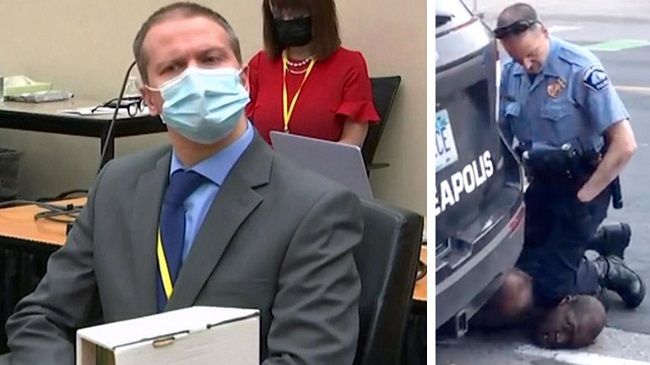Minnesota — A wide range of defence and prosecution strategies aimed at swaying the jury have been made available to viewers from around the world during the murder trial of a former Minneapolis police officer accused in George Floyd’s death.
Some tactics and terminologies used in Derek Chauvin’s trial are uncommon outside of criminal courtrooms. To better explain what viewers are seeing and hearing, The Associated Press has looked into them in greater detail.

Participating Elements
On May 25, 2013, a video captures Chauvin putting his knee against Floyd’s neck for 9 minutes and 29 seconds. However, it is up to defence lawyers to raise questions about whether the deceased Black man’s death was actually caused by the former officer. They have attempted to make the case that he might have died from other causes, such as drug use.
Read Also:
- IPad Pro Case Compatible with Magic Keyboard
- Statement by Press Secretary Jen Psaki on Eviction Moratorium …
Last year, a medical examiner came to the conclusion that Floyd’s heart stopped as a result of the way the police had him restrained and had compressed his neck. However, the death certificate also listed “other contributing conditions” such as clogged arteries, high blood pressure, fentanyl intoxication, and recent methamphetamine use.
Dr. Andrew Baker, the chief medical examiner for Hennepin County, testified that those issues “didn’t cause the death.”
Chauvin is accused of manslaughter and murder in the second and third degrees.
Eric Nelson, the officer’s attorney, has argued that the officer followed protocol and that Floyd’s death was brought on by the use of illegal drugs and pre-existing medical conditions.
“I Took too Much Drugs”
Nelson has made an effort to highlight Floyd’s drug use and has attempted to show that on Wednesday, as officers pinned Floyd down, Floyd yelled, “I ate too many drugs.”
Nelson asked prosecution witness Jody Stiger, a Los Angeles Police Department sergeant who served as a prosecution use-of-force expert, if he heard Floyd say: “I ate too many drugs,” after playing a brief clip from a police body camera video.
Stiger answered, “I can’t make that out. When Nelson later played it back for senior special agent James Reyerson with the Minnesota Bureau of Criminal Apprehension, he received a nod from him and confirmed that Floyd did indeed appear to say that.
However, prosecutor Matthew Frank re-played a longer segment from the same body cam video that expanded upon Floyd’s statement.
I think Mr. Floyd was saying, “I ain’t do no drugs,” Reyerson retorted.
Electronic Delirium
Experts and other Minneapolis police officers have testified that Floyd was restrained and detained on the sidewalk using excessive force. The term “excited delirium,” which one of the responding officers is heard using on a police body camera as a panicked Floyd writhed and claimed to be claustrophobic as officers tried to put him in the squad car, was explained to the jury this past week.
The term was described on the stand by a Minneapolis police officer who instructs others in medical care as a combination of “psychomotor agitation, psychosis, hypothermia, a wide variety of other things you might see in a person or rather bizarre behaviour.”
In testimony on Thursday, a forensic medicine specialist who serves as an emergency medicine professor at the University of Louisville and a police surgeon for the Louisville Metro Police Department in Kentucky said that Floyd did not meet any of the 10 standards set forth by the American College of Emergency Physicians.
Technology Used in Courts
The most important aspect of the case for the defence and prosecution may be the extensive video evidence of Floyd’s death from security cameras, cellphones, and police body cameras.
Chauvin is being tried in a modern courtroom, which is equipped with projectors, large video screens, and cutting-edge software.
In order to demonstrate how Floyd was restrained on the pavement, Dr. Martin Tobin, a lung and critical care specialist at the Illinois’ Loyola University Medical Center and the Edward Hines Jr. VA Hospital, used computer animation. It gave the jury a full 360-degree view of the officers’ location and activity.
Read Also:
To show Chauvin putting his knee to Floyd’s neck, he combined images from a witness video. Officers were now holding Floyd down on his stomach with his hands cuffed behind his back as his respiratory distress worsened. According to the doctor, the pictures demonstrated Floyd’s attempts to breathe by using his shoulder muscles.
















